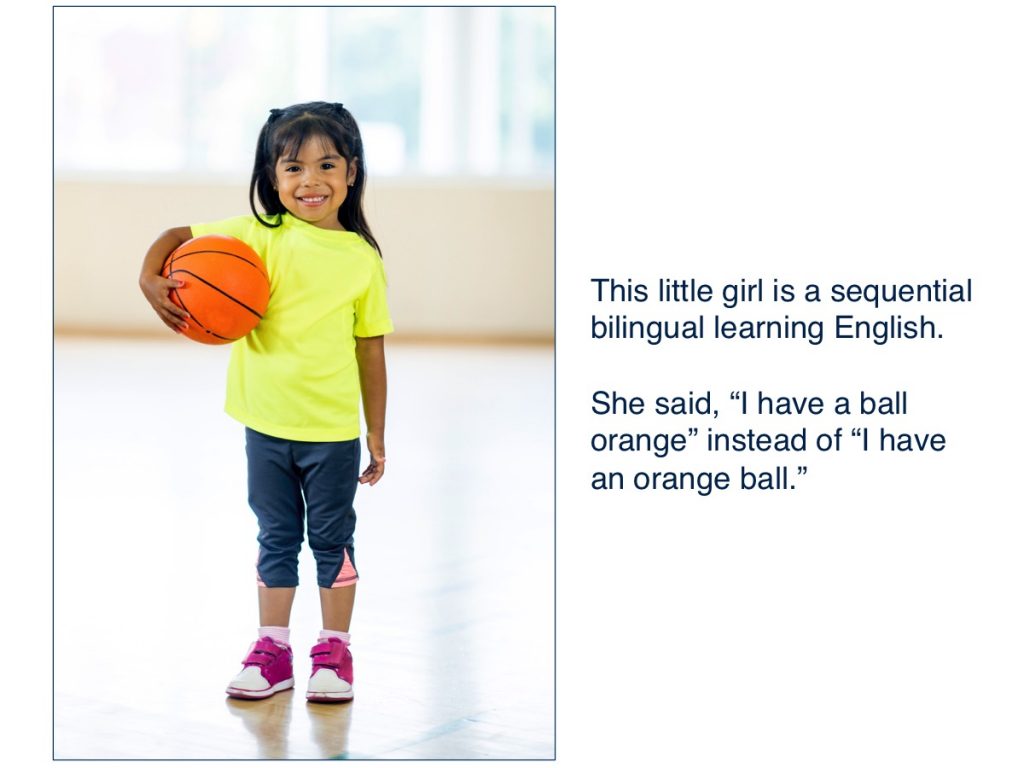
Some people believe that bilingualism puts children at risk for language delays. But research does not support this.
Simultaneous bilinguals reach language milestones at the same ages as their monolingual peers. Regardless of how many languages they are learning, children usually say their first words around 12 months of age. A bilingual’s first words may be in one or both languages. It depends on the child’s experience with each language. Bilingual vocabulary and grammar development show the same pattern as in monolingual development. Monolingual and bilingual children begin to combine words around 18 months. By age 3-4, children produce more complex sentences. Just like monolinguals, bilinguals show variability in the ages at which they reach each milestone.
Sequential bilinguals show different language learning patterns. Children already know one language but must learn a new language. Children use different strategies for learning a new language. At first, some children may only observe, quietly collecting information about the new language. Other children may continue to communicate in their native language. Or children may use the language rules from their native language in the new language. This is called language transfer. Imagine the girl in this picture speaks Spanish and is learning English. She may say, “I have a ball orange” instead of “I have an orange ball.” This is normal. In English, the adjective (orange) comes before the noun (ball), while the reverse is true for Spanish. This little girl will stop showing language transfer as she becomes more familiar with the new language.
-
- Bilingual
- a person who knows and uses two languages
- Code mixing
- mixing words from different languages in the same sentence or situation
- Cognitive flexibility
- the ability to quickly switch between different concepts or rules
- Dominant language
- is the language a bilingual is most skilled at understanding and/or speaking
- Executive function
- a set of mental abilities that help us plan, focus attention, problem solve, and switch between tasks
- Language transfer
- applying the knowledge from one language to another language
- Monolingual
- a person who knows and uses a single language
- Simultaneous bilingualism
- a person learns two or more languages from birth
- Sequential bilingualism
- a person first learns one language then learns one or more languages later